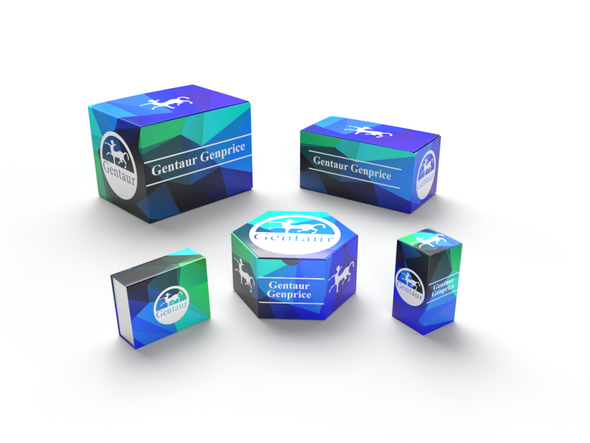Description
ATM Antibody | 3945 | Gentaur UK, US & Europe Distribution
Host: Rabbit
Reactivity: Human
Homology: Predicted species reactivity based on immunogen sequence: Pig: (86%) , Mouse: (71%)
Immunogen: ATM antibody was raised against a peptide corresponding to 14 amino acids near the carboxy terminus of human ATM.
The immunogen is located within amino acids 2970 - 3020 of ATM.
Research Area: Homeostasis, Cancer
Tested Application: E, WB, IHC-P, IF
Application: ATM antibody can be used for detection of ATM by Western blot at 1 - 2 μg/mL. Antibody can also be used for immunohistochemistry starting at 2.5 μg/mL. For immunofluorescence start at 10 μg/mL.
Antibody validated: Western Blot in human samples; Immunohistochemistry in human samples and Immunofluorescence in human samples. All other applications and species not yet tested.
Specificiy: N/A
Positive Control 1: Cat. No. 1224 - Daudi Cell Lysate
Positive Control 2: Cat. No. 1369 - Human Lymph node Tissue Lysate
Positive Control 3: Cat. No. 11-521 - Human Lymphoid Tissue Tissue Slide
Positive Control 4: N/A
Positive Control 5: N/A
Positive Control 6: N/A
Molecular Weight: N/A
Validation: N/A
Isoform: N/A
Purification: ATM Antibody is affinity chromatography purified via peptide column.
Clonality: Polyclonal
Clone: N/A
Isotype: IgG
Conjugate: Unconjugated
Physical State: Liquid
Buffer: ATM Antibody is supplied in PBS containing 0.02% sodium azide.
Concentration: 1 mg/mL
Storage Condition: ATM antibody can be stored at 4˚C for three months and -20˚C, stable for up to one year. As with all antibodies care should be taken to avoid repeated freeze thaw cycles. Antibodies should not be exposed to prolonged high temperatures.
Alternate Name: ATM Antibody: AT1, ATA, ATC, ATD, ATE, ATDC, TEL1, TELO1, Serine-protein kinase ATM, Ataxia telangiectasia mutated, A-T mutated
User Note: Optimal dilutions for each application to be determined by the researcher.
BACKGROUND: ATM Antibody: DNA double strand breaks represent a major threat to an organism's genome. Eukaryotic cells have developed mechanisms that sense the presence this damage and initiate suitable responses that can include DNA repair, cell cycle delay, and programmed cell death. The ATM (mutated in Ataxia-Telangiectasia) protein kinase is activated following the formation of DNA double strand breaks, phosphorylating p53 and another kinase CHK2. This initiates a signaling cascade leading to the phosphorylation and inhibition of Cdc25, ultimately preventing cell cycle progression. In some cell types, such as the hemapoietic system, this leads to apoptosis instead of cell cycle arrest. Multiple isoforms of ATM are known to exist.






